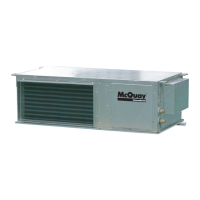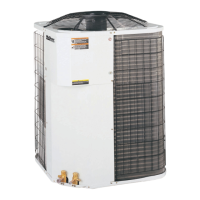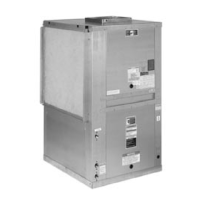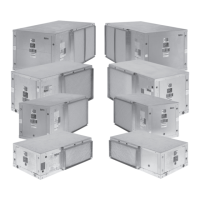IM 985-1 / Page 31 of 36
Troubleshooting
The in and outs of R-410A
R-410A is a non-ozone depleting blend of two
refrigerants-HFC-125andHFC-32inaftypercent
mixture. R-410A exhibits higher operating pressure and
refrigeration capacity than R-22. R-410A is intended
for use in new air conditioning applications that have
traditionally used HCFC-22 (R-22). Due to higher
capacity and pressure of R-410A, it must not be used in
existing R-22 systems.
AlthoughR-410Aisnon-ammableatambient
temperature and atmospheric pressure, it can become
combustible under pressure when mixed with air.
Note: R-410A should not be mixed with air under
pressure for leak testing. Pressure mixtures of dry
nitrogen and R-410A can be used for leak testing.
Lubrication
R-410A should be used only with polyester (POE)
oil. The HFC refrigerant components in R-410A will
not be compatible with mineral oil or alkylbenzene
lubricants. R-410A systems will be charged with the
OEM recommended lubricant, ready for use with R-
410A.
Charging
Due to the zeotropic nature of R-410A, it should
be charged as a liquid. In situations where vapor is
normally charged into a system, a valve should be
installedinthecharginglinetoashtheliquidtovapor
while charging.
Make certain that the recycle or recovery equipment
used is designed for R-410A. The pressure of R-410A
refrigerant is approximately 60 percent greater than
that of R-22. Pressure gauges require a range up to
800 PSIG high side and 250 PSIG low side. Recovery
cylinders require a 400 PSIG rating – do not put R-
410A in a 300 PSIG rated cylinder.
Note: Because a water source heat pump operates
under a wide range of water and air temperatures, the
values printed below are to be taken as suggested
pressure and temperatures. All McQuay water
source heat pumps are designed for commercial
use. The units are designed for the cooling
mode of operation and fail safe to cooling. The
reversing valve is energized for the heating mode of
operation
.
Superheat Head Pressure Water Delta T
8 to 14 degrees 335-355 PSIG 10° to 14°
All information above is based on ISO standard
13256-1 and tested at these conditions.
General Maintenance
1. Normal maintenance on all units is generally
limitedtolterchanges.Unitsareprovidedwith
permanently lubricated motors and require no oiling
even though oil caps may be provided.
2. Filter changes are required at regular intervals. The
time period between changes will depend upon
the project requirements. Some applications such
as motels produce a lot of lint from carpeting and
linenchanges,andwillrequiremorefrequentlter
changes.Checkltersat60-dayintervalsforthe
rstyearuntilexperienceisacquired.Iflightcannot
beseenthroughthelterwhenhelduptosunlight
or a bright light, it should be changed. A more
critical standard may be desirable.
3. The condensate drain pan should be checked
annuallyandcleanedandushedasrequired.
4. Record performance measurements of volts, amps,
and water temperature differences (both heating and
cooling). A comparison of logged data with start-up
and other annual data is useful as an indicator of
general equipment condition.
5. Periodic lockouts almost always are caused by air or
water problems. The lockout (shutdown) of the unit
is a normal protective result. Check for dirt in the
watersystem,waterowrates,watertemperatures,
airowrates(maybeadirtylter),andair
temperatures. If the lockout occurs in the morning
following a return from night setback, entering air
below machine limits may be the cause.
Recycle/recovery equipment must be designated for R-
410A. R-410A pressure is greater than R-22. Improper
equipment can cause severe injury or death.
WARNING

